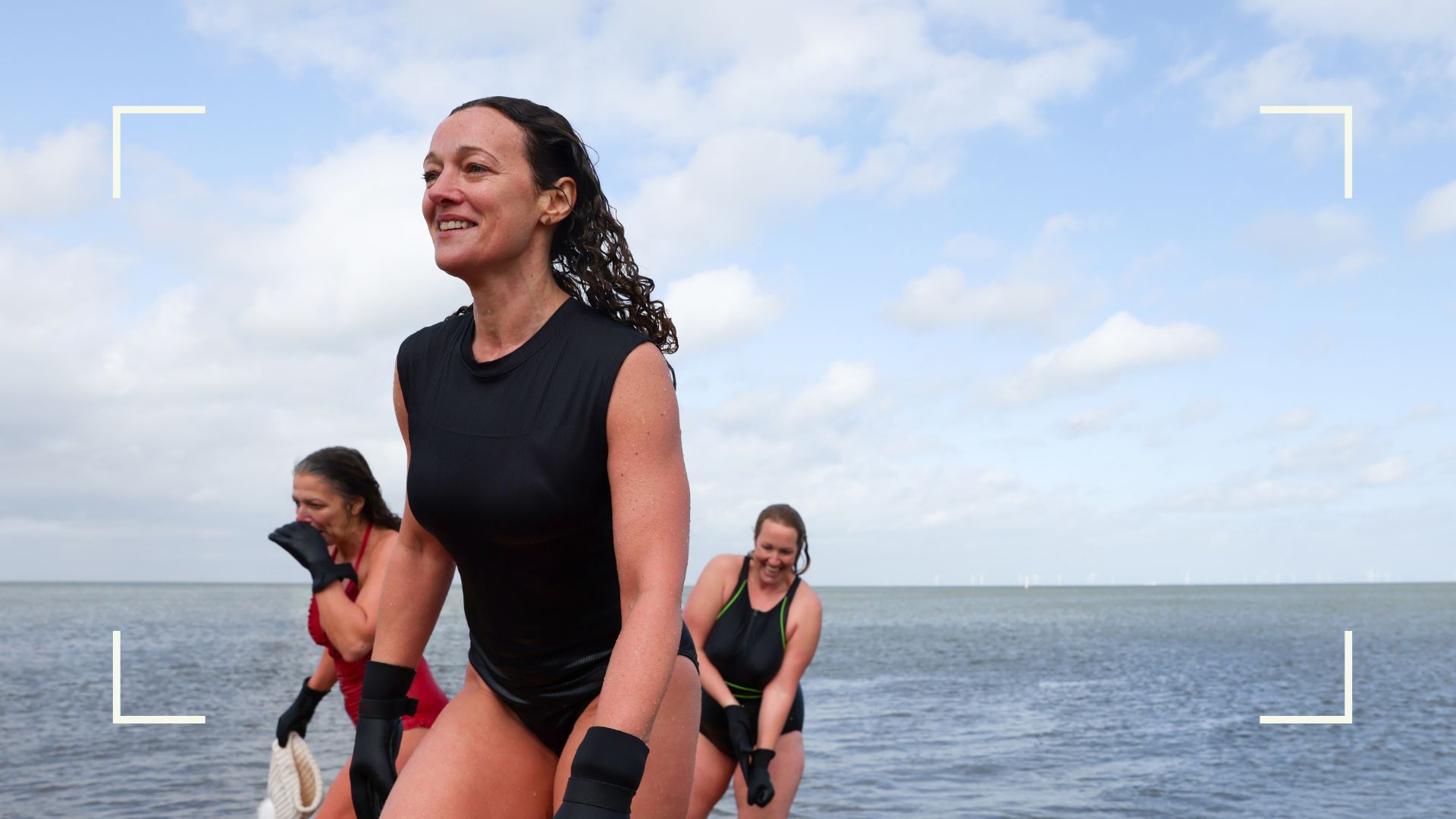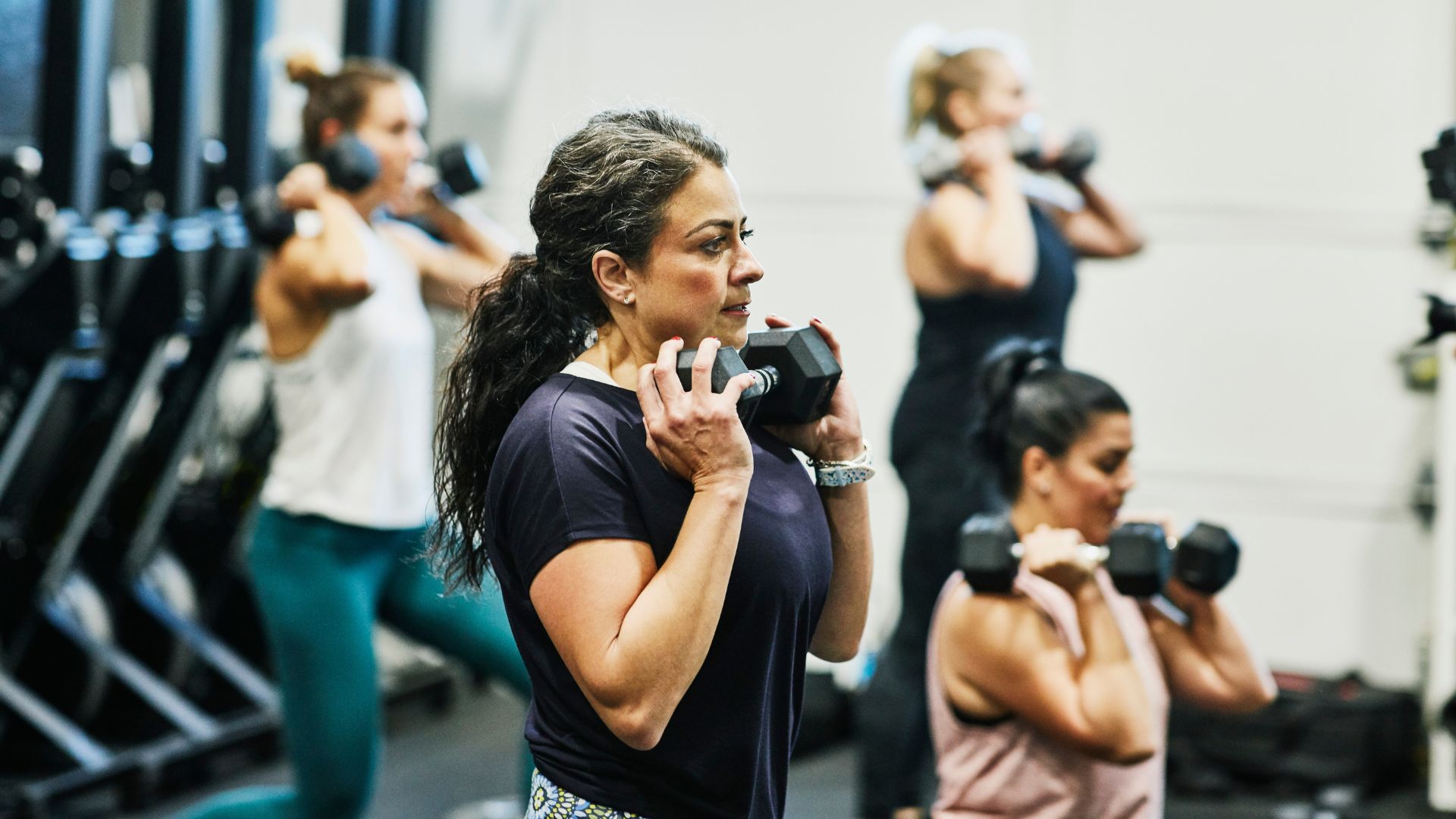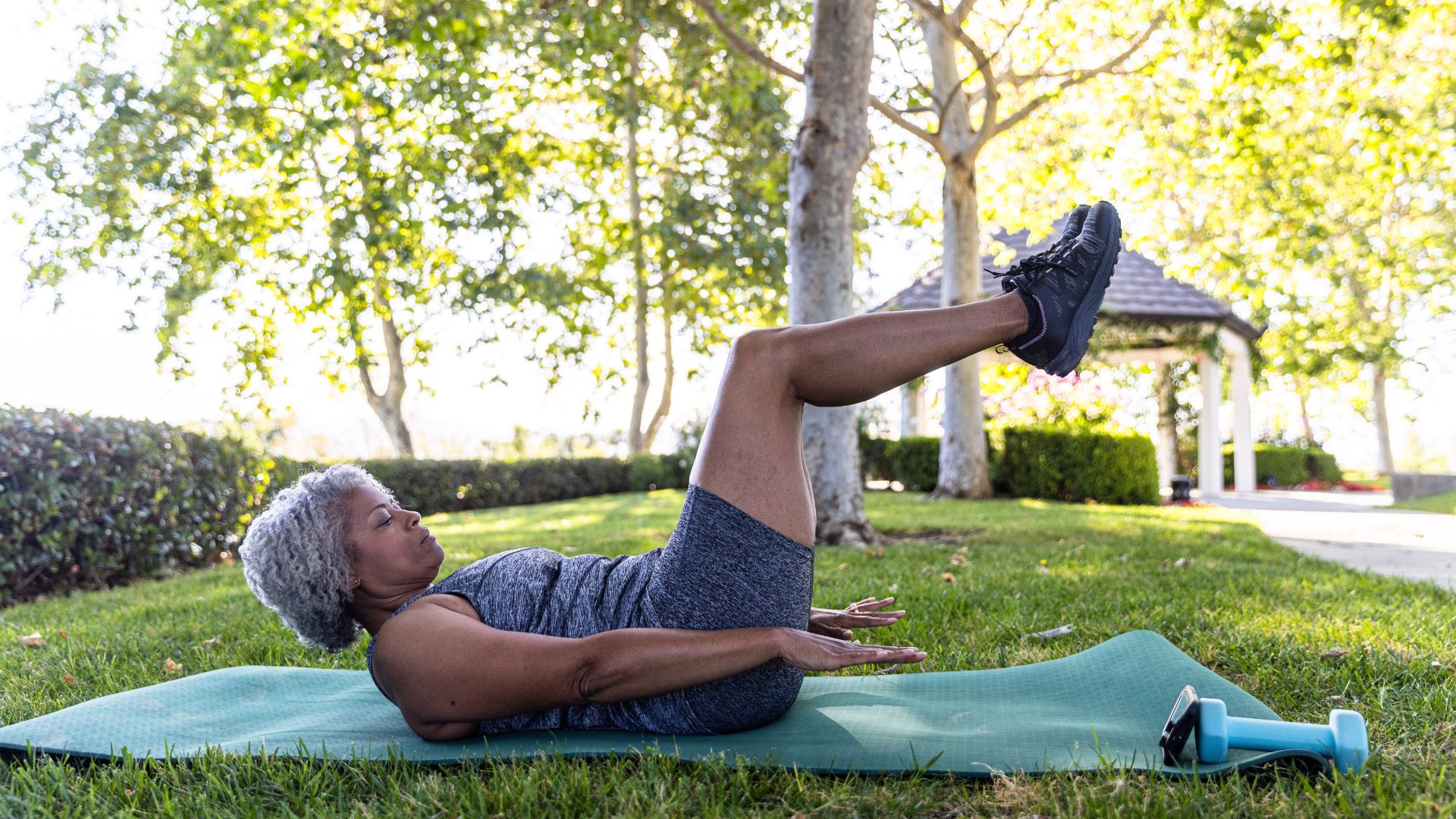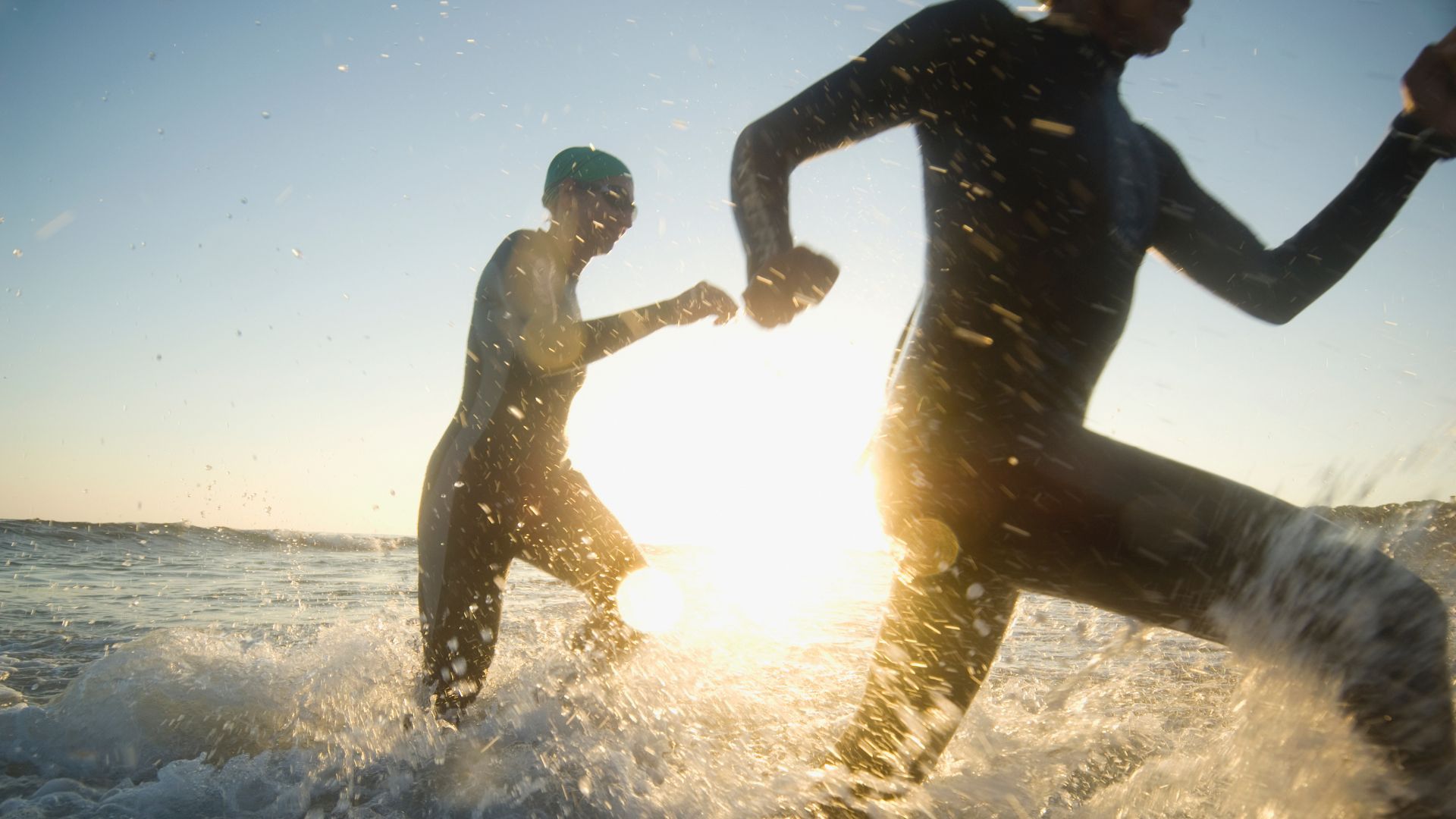What is the best exercise for stress relief? Personal trainers reveal their favorites
The best exercise for stress relief will be different for everyone, here's how to find yours


When you're feeling strung out, exercise for stress relief can be one of the best activities to get your mind back on track.
Sure, it might not make perfect sense to try and beat work, personal, or family-related stress with another type of stress (exercise almost by definition is stressful), but we promise it helps. Exerting yourself by lifting weights, running, cycling, or any other activity you enjoy is considered a 'good' type of stress, while emotional fatigue and exhaustion-provoking activities are 'bad' stress.
Luckily, it also doesn't matter how you work out, simply moving your body will do wonders for your mental health and physical health by improving the natural stress response and lowering the risk of habitual burnout. Although, as the experts explain here, there are some more positives to certain exercises than others if you're looking to learn how to reduce stress in the long term.
How does exercise for stress relief work?
Exercise helps with stress because it triggers the release of feel-good hormones and neurotransmitters, such as endorphins, norepinephrine, and serotonin, which have an overwhelmingly positive effect on our mood and mental wellbeing. "These act as neurotransmitters in the nervous system to relieve pain and increase pleasure. They boost mood and self-esteem, and reduce feelings of stress, depression, and anxiety," explains personal trainer and health coach Sharon Gam, who has a Ph.D. in exercise physiology.
Working out also releases endocannabinoids, which are another type of molecule that can have the same effect, she adds. "Recent research from the University of Duisberg-Essen points to these as being responsible for the 'runner's high', although it's still under debate, she says.
Along with the release of these chemicals, our brains create more receptors for them post-exercise, so "not only do you get more beneficial substances floating around in your brain, you become more sensitive to them," which means the more you workout, the more beneficial the physical after-effects of exercise will be.
If that's not an excuse to pull out your trainers, dust off the stationary bike from lockdown, or download one of the best workout apps, I don't know what is. But what's the most beneficial exercise for stress relief? Here, woman&home speaks to several personal trainers and exercise specialists to reveal the key benefits of popular activities, including running, weightlifting, cycling, and yoga.
Sign up to our free daily email for the latest royal and entertainment news, interesting opinion, expert advice on styling and beauty trends, and no-nonsense guides to the health and wellness questions you want answered.
Best exercise for stress relief
1. Running
One of the many benefits of running for women is the impact it has on our stress levels, as running and triathlon coach Kristen Hislop explains. "Running increases concentrations of norepinephrine [a neurotransmitter and hormone partly responsible for the 'fight or flight' response] in the brain, moderating the response to stress. It will also lower blood pressure and tends to lower blood sugar, both of which result in it being easier for the body to handle stress," she explains.
When it comes to destressing before or after work, studying, or an emotional event, regular running (like running 30 minutes a day or running meditation) can be particularly beneficial. "Running results in better blood flow and even the creation of new blood vessels," Hislop adds. "In the brain, this means better cognition and improvements in brain performance."
There have also been many studies on the topic of stress and running, with research from the University of Pittsburgh showing that aerobic exercise can increase the size of the hippocampus, which is responsible for memory, task switching, and mood.
How to get started: For those looking to learn how to start running even just around the block, starting slow is the best advice. Lace up your pick of the best running shoes, find a good sports bra, and focus on doing a slow jog in your local area as this will help you build up cardio endurance comfortably. Over time, increase your distance, time, or speed to improve.
2. Strength training
For Dr Sharon Gam, a personal trainer and health coach with a Ph.D. in exercise physiology, strength training is the winning exercise when it comes to lowering our stress levels. While any exercise is beneficial, she says, "I believe strength training is particularly important for improving mental health and building mental resistance to stress."
When you're in a stressful situation, there's often an element of uncertainty, she explains. "The physical stress responses can seem to come out of nowhere, and you may not have a clear indication of when they’ll subside or what you can do to feel better. Exercise provides a controlled stress response, where the physical sensations have a clear source. You know your heart rate is elevated and your muscles are tense, and you know that those feelings will fade when you stop. You can think of exercise as a practice session for dealing with both the physical responses to stress and building the mental toughness to deal with an uncomfortable feeling," she says.

Whether it's building up your motivation to lift heavier on a squat or deadlift, increasing repetitions during a timed workout, or slowing things down to make the most of the movement, there are many opportunities in strength training to practice that resilience.
"In a 60-minute session, you might do 20 or 30 total sets. Each one gives you a small, controlled stress response to practice dealing with," says Gam. "The more practice you get, the more quickly you can build a tolerance to stress."
Strength training, whether that be powerlifting or a regular weights session in the gym, also builds self-confidence, she adds. "When you feel strong, both physically and mentally, and have confidence in your ability to push yourself and do hard things, you can apply that to other stressful situations in your life."
How to get started: If you're a gym member, there may be some strength-based classes going on. Otherwise, if it's in the budget, call on the help of a personal trainer who will be able to help you with the necessary form and technique to avoid injury, plus offer tips on the type of workout that would work best for you. For more information, see our guide on how to start weightlifting.
3. Pilates and yoga
It'll come as no surprise that slower, lower-intensity workouts like Pilates and yoga are also favored by trainers when it comes to lowering stress levels.
"You have to be in your body [to do Pilates or yoga] and to do that, you have to zoom out of the chatter and zoom into you," says Amy Brogan, a personal trainer and Pilates instructor. "It's about disconnecting to reconnect and focusing on the breath, which naturally brings your body back to homeostasis."
Plus, Brogan says, Pilates for beginners offers tools to help you better manage stress in daily life, when you're at your desk, at home, and so on. "One of the main principles is the breath and this is the gateway to stress relief. The breath relaxes you and enables you to release unnecessary tension in the body and relieve stress."
However, where yoga and Pilates are similar in the way described above, Pilates does offer more movement and encourages the body to stay stable in challenging, core-clenching movements. For those looking for a workout along with a way to lower stress, this could be the one, while anyone looking for a slower, stretch-like workout may prefer yoga for stress relief.
How to get started: "Start slow and look for beginners classes," suggests Brogan, who is also the founder and head PT at A Body Forever, a platform offering a unique fusion of personal training and Pilates. "Beginners classes the lay the foundation and really focus on the mind-to-body connection and breathing, being in your body, and really focusing on you."

4. Outdoor swimming
Swimming has perhaps become more popular than ever before in recent years, with everyone from those who love ice swimming to those who just prefer a dip in the sea praising the benefits of the sport for stress relief.
It's no surprise, says Sue Wilson, an STA level 2 open water coach. "Swimming is a gentle, supported exercise that moves almost every part of your body. Plus, in the water you are naturally away from your mobile, media, computers and the general hustle and bustle of our busy world. It is your space and it belongs to you alone, it’s real downtime."
When it comes to outdoor swimming, the shock of the cold water is proven to quickly lower our heart rate by as much as 15% as our body tries to conserve energy, which studies by the SDM College of Naturopathy and Yogic Sciences suggest makes us feel calmer and less anxious. That, and there's no way you'll be able to think about stress relating to anything else when your skin starts to tingle.
Unlike the more stress-relieving high-intensity exercises, you don't need to do a lot to reap the benefits of swimming. "If you find the thought of exercise challenging remember that even a short swim can be a big boost to your mind," Wilson, who is also an ambassador for Zone3, says. "Taking part in any exercise is really better than none at all and personally, I like to think that a slow swim is better than no swim. That’s my mantra, the one that gets me into my swimsuit on one of those rare times when I don’t feel like getting in the water."
How to get started: Find a good open-water swimming group in your local area, says Wilson. Not only is this essential for safety reasons (especially if you're wild swimming) but "there is the added bonus of support" and you'll be able to keep yourself accountable in the long term.

5. Cycling
Weighing up running vs cycling for stress relief? While you'll need more equipment like a bike and a helmet, or membership to a cycle class to do it, it's much lower impact and comes with plenty of stress-relieving benefits.
As personal trainer Rachael Penrose says, "Cycling, like other forms of physical activity, triggers the release of endorphins that can help to improve mood, reduce anxiety, and relieve stress. It also promotes mindfulness, being present and fully engaged in the moment. As I cycle, I hone my focus on the physical act which allows me to let go of distracting thoughts and feelings, and feel calmer and centered," she says.
Plus, much like running, there's a huge community around cycling that can help you lower stress, beat habitual burnout, and improve exercise motivation. Not only will you feel encouraged to book that class or hop on the bike no matter the weather, but "workout classes offer an opportunity to socialize and connect with others who share similar interests and goals," says Penrose, who is also a trainer at Echelon, an at-home indoor cycling platform. "This social support can help alleviate feelings of loneliness and isolation, which can be a significant source of stress."
How to get started: Whether you want to spin or ride outdoors, keep it simple and start slow. "If you are new to cycling, like anything else in life, take it easy for your first few rides and gradually increase," says Penrose. "You also want to make sure that you have a comfortable bike and that it fits you well."
Try cycling both indoors and out as they are two very different experiences, she adds. "You want to enjoy the journey, especially when it comes to stress relief."

6. Walking
The common line is that if you feel stressed, you should go for a walk - but the experts agree this really is one of the top exercises for stress relief. Whether it's power walking or walking meditation, finding even just 10 minutes to walk has been proven by the University of Mississippi to have numerous benefits for our stress levels, as well as general mental and physical health.
As well as offering all the endorphins and happy hormones as a result of the elevated heart rate and higher breathing rate, walking combines all the perks of running with the benefits of yoga and even meditation. The act of moving one foot in front of the other puts the body in a calm and relaxed state even without serious effort and as most walking takes place outside, walkers can experience all the stress-relieving benefits of fresh air and the outdoors.
"Being out in nature reduces stress so I definitely recommend going outside and exercising whenever you can," says Melissa Bell, a certified exercise nutritionist specializing in menopause. "But keep in mind you don't have to go 'all out' all the time."
How to get started: Walking is perhaps one of the easiest exercises to start from scratch. All you need is a good route in your local area (try AllTrails or Komoot to map on your phone), a pair of good walking shoes, and some time in your day. If you need to boost your motivation to get moving, consider making a playlist or taking a friend along for the ride.
How can I reduce my stress in 5 minutes?
- Find the trigger: Acknowledging that you're stressed and why is important, says Bell. "There are many different stressors on our bodies, both psychosocial, like relationships, work, politics, etc, and physical, like unhealthy food, toxins in environment and products, and even exercise itself. It's important to look for your specific triggers," she says. This will help you understand the problem and how to solve it.
- Write it down: Sometimes we're stressed because there seem to be too many balls in the air, too much to think about, so write it all down. Create a list of problems, no matter how big or small, that are causing you stress - either on paper or with one of the best journaling apps. You'll then be able to see what really lies ahead and plot proactive solutions to solve the problems.
- Breathe: Just as Penrose says, breathing plays a major role in how our bodies respond to stress and it's entirely possible to adjust that process in 5 minutes. To find a method that works for you, download one of the best meditation apps like Calm or Headspace as these have quick sessions you can do anytime.
- Get some fresh air: Head outside if you can and spend your five minutes, eyes closed or looking ahead, just taking in the fresh air and world around you. "Even spending a few minutes barefoot in the grass in the sunshine can do wonders," says Bell.

Grace Walsh is woman&home's Health Channel Editor, working across the areas of fitness, nutrition, sleep, mental health, relationships, and sex. She is also a qualified fitness instructor. In 2025, she will be taking on her third marathon in Brighton, completing her first ultra marathon, and qualifying as a certified personal trainer and nutrition coach.
A digital journalist with over seven years experience as a writer and editor for UK publications, Grace has covered (almost) everything in the world of health and wellbeing with bylines in Cosmopolitan, Red, The i Paper, GoodtoKnow, and more.